Forklifts are one of those vehicles every kid seems to love. From the old days of Tonka to modern LEGO City sets, forklifts are everywhere. But what you see is just the tip of the iceberg.
There are more than 100 types of forklift out there, some of which look nothing like the iconic images or what you might find in a warehouse. And there are some types you may have seen but never thought of as a forklift.
Here is a small sampling of 18 different types to illustrate how varied these useful machines can be.
Read Also: 11 Types of Dump Trucks
Types of Forklifts
1. Articulated Forklift
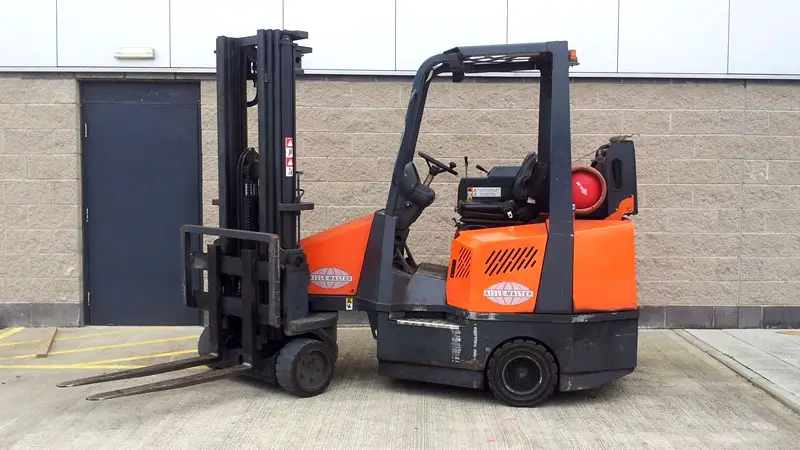
One of the biggest problems forklift operators face is the narrowness of aisles. Several different types approach this problem in often unique ways, but few as efficiently as the articulated forklift.
The frame is bisected, allowing the mast assembly to be rotated up to 90 degrees to the left or right of the compartment. This means the main body doesn’t have to turn or maneuver once in an aisle and can still access materials to either side.
2. Center-Controlled Pallet Jack
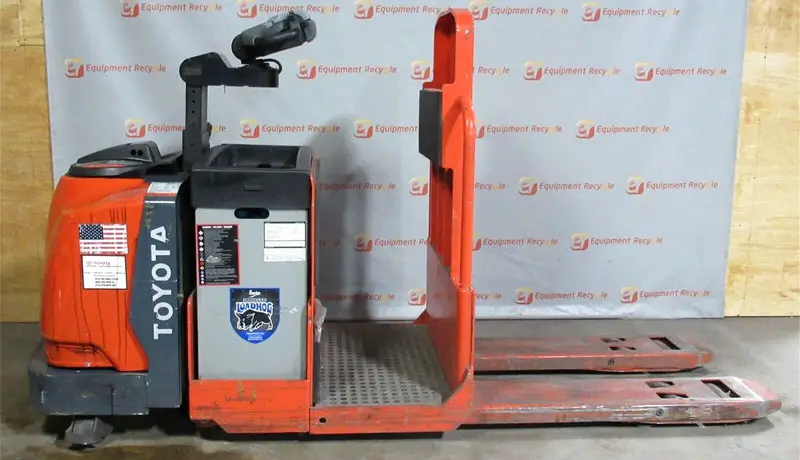
These special pallet jacks have a platform between the controls and fork for the operator to stand. They provide the convenience of a regular pallet jack but added safety against collisions or falling.
3. Cold Storage Forklift
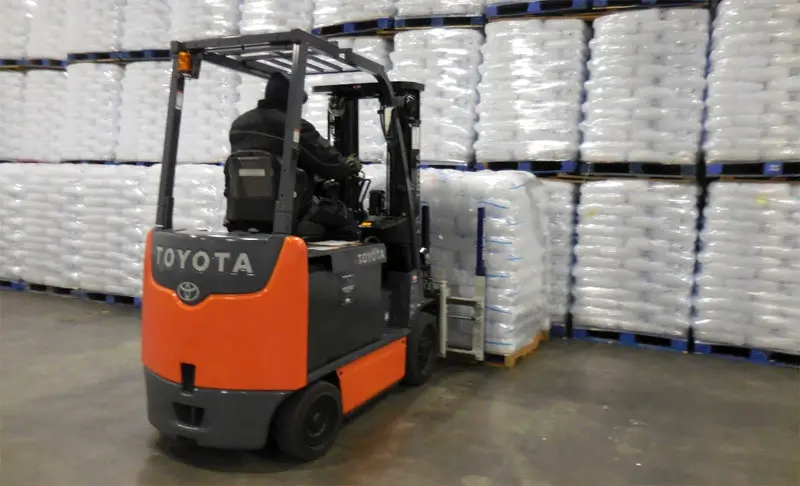
These specialty forklifts look identical to warehouse forklifts on the outside. However, they have specially insulated and cold-resistant parts to allow them to function inside meat processing facilities and other forms of cold storage.
Moisture-sensitive parts are further protected to keep them from getting wet through condensation or ambient humidity.
4. Counterbalance Forklift
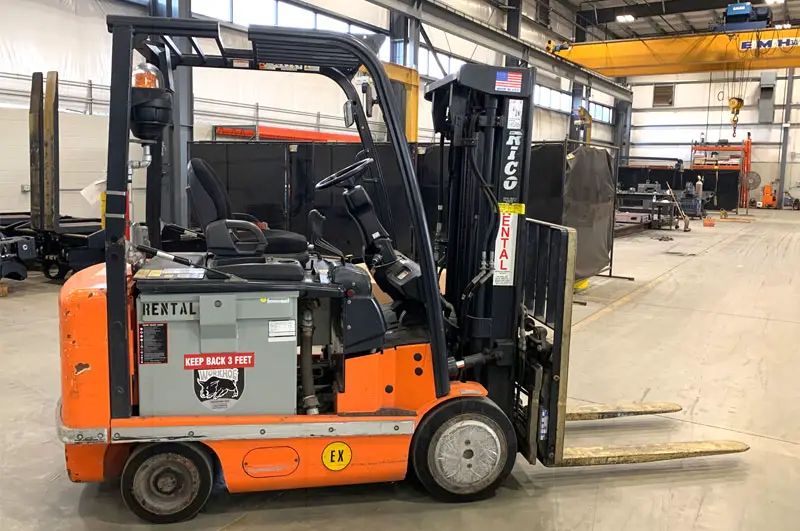
Perhaps the most iconic of all forklifts, counterbalance forklifts have a counterweight system at the rear of the vehicle. The fork doesn’t extend, but the vehicle is instead designed to move close to the load when lifting.
One of the advantages to these forklifts is the compact shape, allowing them to do tight circle maneuvering.
See Also: Different Types of Forks
5. Explosion-Proof Forklift
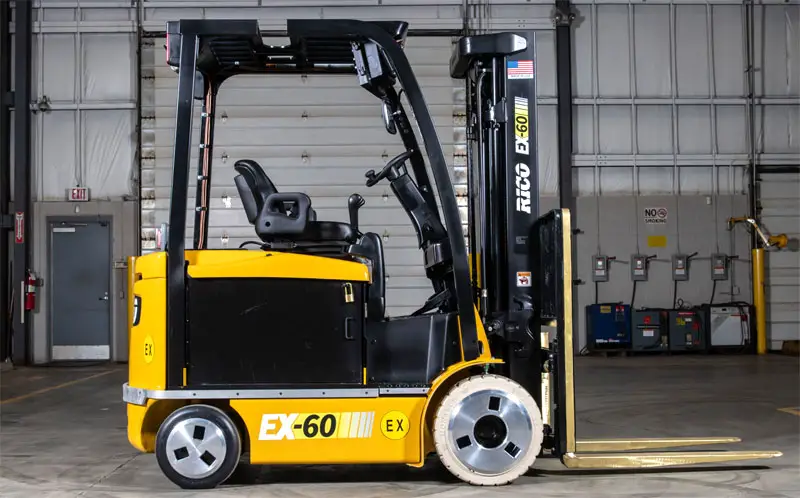
Some warehouse conditions are far too dangerous for regular forklifts. This is where the explosion-proof forklift comes in. These specialized warehouse forklifts have all electronic components sealed and metal surfaces are coated in bronze to prevent the risks of sparks.
Places you’ll commonly see an explosion-proof forklift are ordinance facilities, paint factories, and sugar mills.
6. Hand Pallet Jack
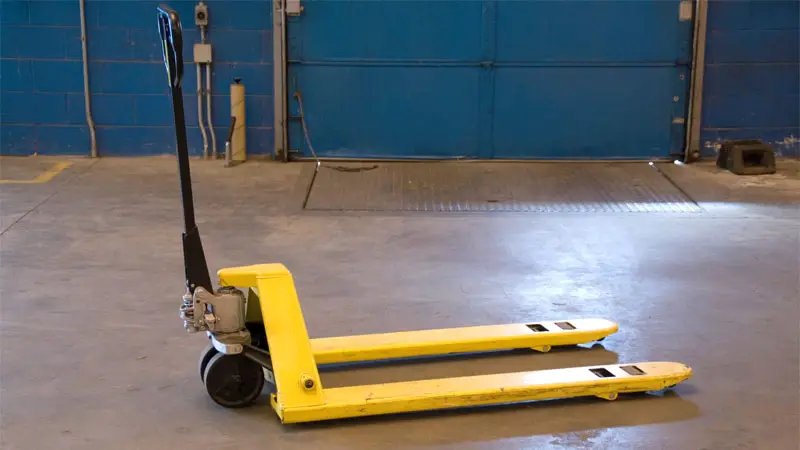
When it comes to forklifts, it doesn’t get much more basic than this. The operator pushes the forks around, which can lift as much as 5,000 pounds.
The compact design and ease of operation have made hand pallet jacks a staple in warehouses, supermarkets, and retail outlets.
7. Industrial Forklift
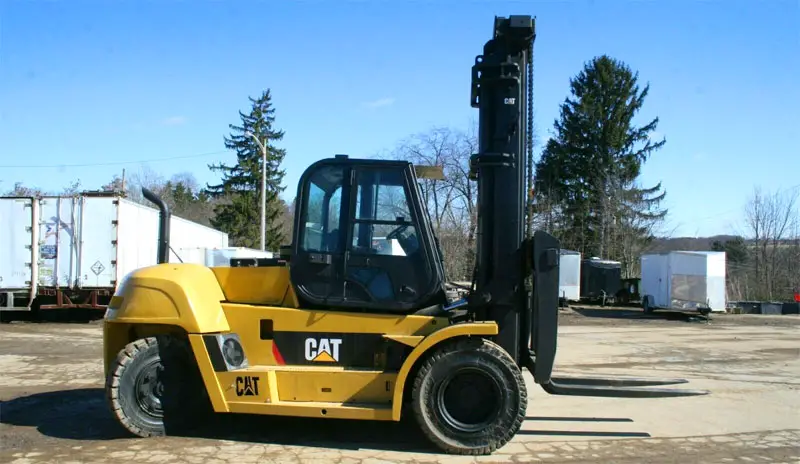
These powerful forklifts have the best qualities of both warehouse forklifts and telehandlers with the added ability to carry loads of 30,000 to 36,000 pounds.
They’re not as useful in general situations as the aforementioned types, but can outperform both for certain tasks. Due to its added power, industrial forklifts are sometimes referred to as large capacity forklifts.
8. Material Lift
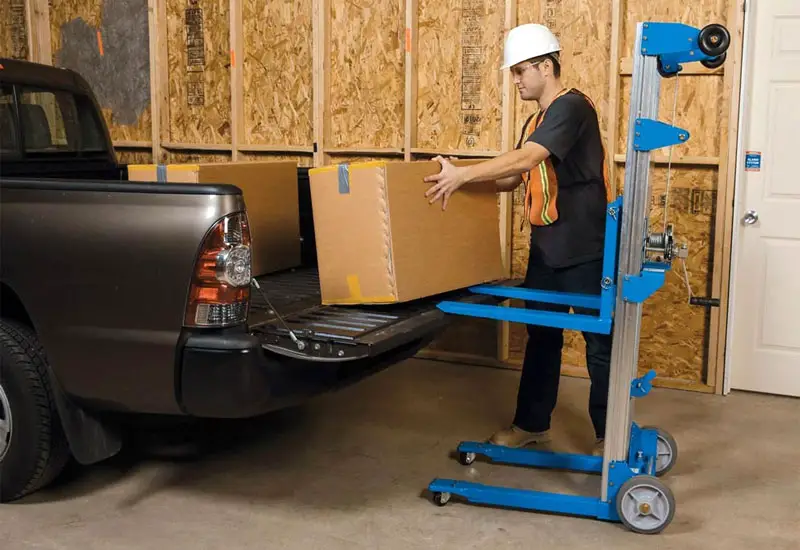
One of the more unusual looking forklifts, the material lift has a small base and high mast designed for vertical lifting of materials too heavy for a person. These lifts are capable of raising materials as high as 26.5 feet.
9. Multi-Directional Forklift
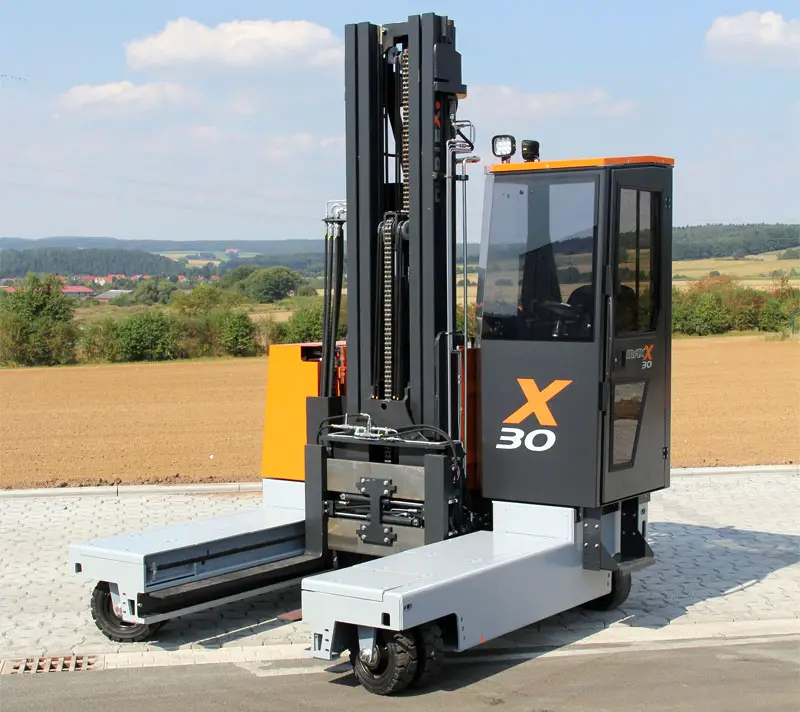
Why try to navigate tight corners when you can just change direction with the flick of a lever? These specialty forklifts have wheels on all four sides, with a lever controlling which wheels are raised or lowered.
This means the forklift can change directions between forward, reverse, or 90 degrees left or right without the need to turn. Besides the obvious bonuses to maneuverability, this also allows the forklift to guide wide loads through a doorway.
10. Order Picker
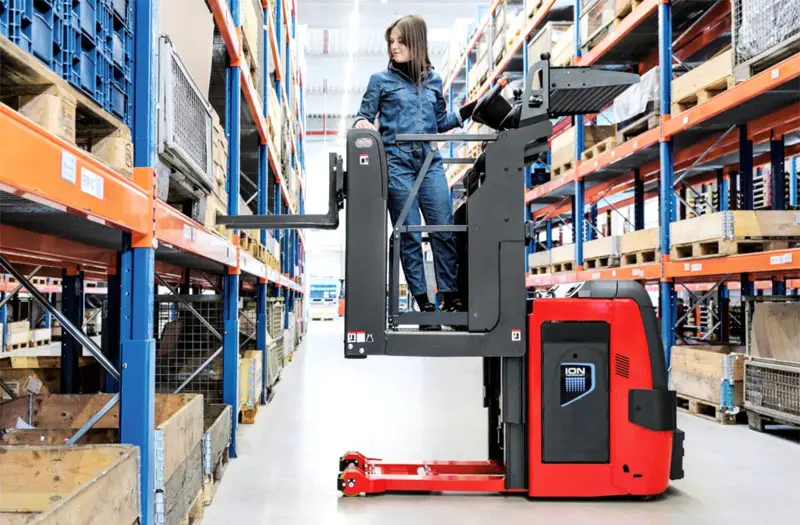
One of the most unusual forms of walkie stacker, this forklift is designed to lift the operator, rather than pallets. They’re most commonly found in order warehouses and storage facilities where it’s only necessary to retrieve a few units at a time.
The fork has a platform for the operator to stand on and can reach shelves as high as 32 feet.
11. Paper Roll Handler
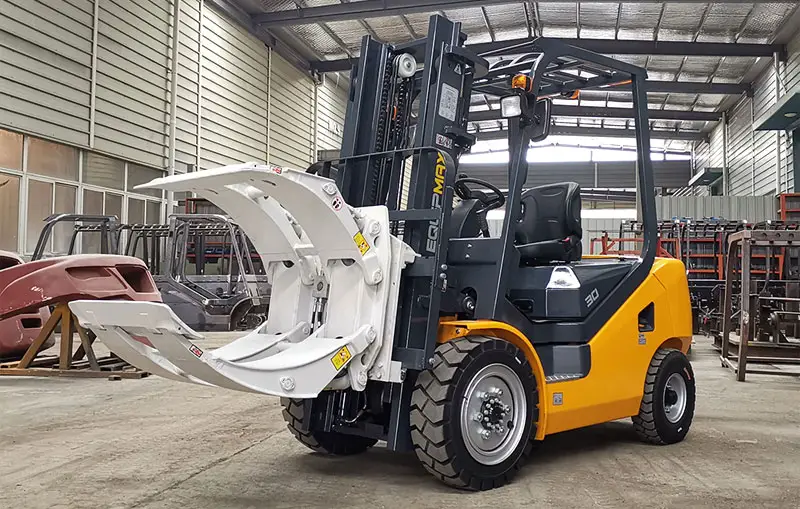
This is a highly specialized type of pallet jack designed specifically for moving rolls of paper. They’re employed at converting companies and paper mills where their triangular forks are used to cradle the rolls so they won’t roll off.
12. Reach Forklift
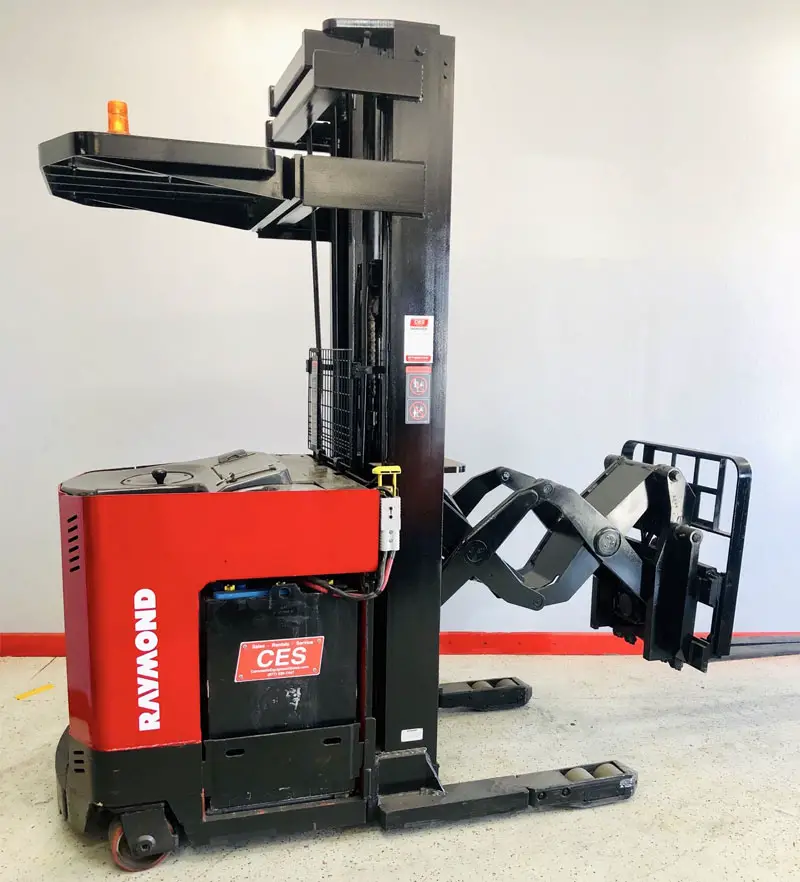
These indoor forklifts are used in warehouses where precise picking from high shelves is a must. Their tall mast allows the forks to be raised well above the compartment to get to shelves a normal warehouse forklift can’t reach.
It also has an open cabin design for improved visibility. The low ground clearance makes reach fork trucks difficult to use outdoors, however.
13. Straight Mast Forklift
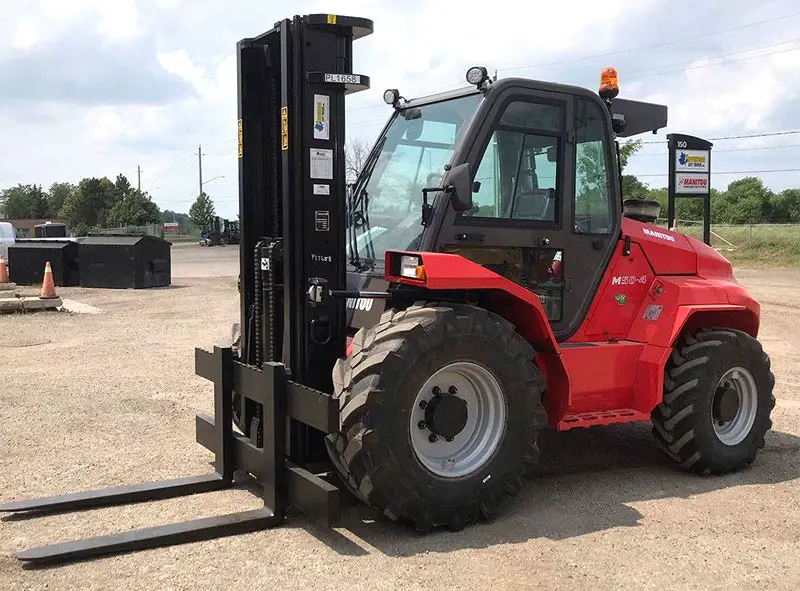
These tough forklifts are sometimes called rough terrain forklifts due to their more durable construction. They have thicker cages and oversized pneumatic tires designed to allow the forklift to operate outdoors on uneven or rocky terrain.
As a general rule, these big brothers of the warehouse forklift have a weight capacity of 6,000 or 8,000 pounds.
Read Also: 19 Different Types of Tractors
14. Side Loader
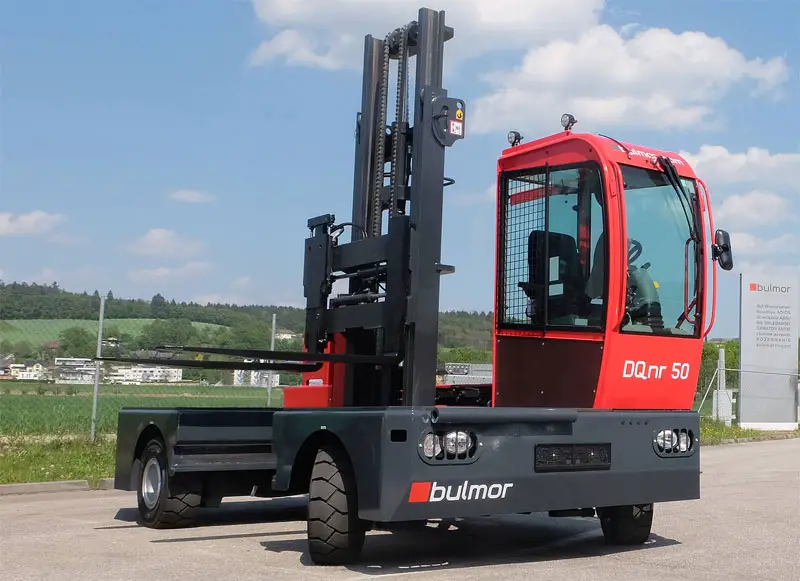
This subtype of warehouse forklift has the fork located sideways in front of the operator’s compartment. This allows the operator to pull up alongside shelving.
The fork retracts towards the center of the vehicle, allowing this type of forklift to load and unload without the need to turn the vehicle.
They’re most often found in factories and steel or wood warehouses where wide, heavy loads must be transported along narrow aisles.
Read Also: 22 Types of Trains
15. Swing Reach Forklift
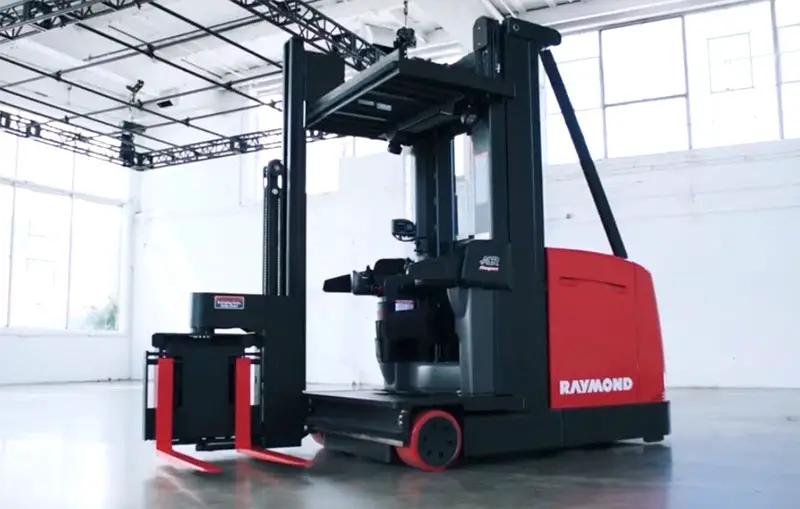
A relative of the order picker, swing reach forklifts have the fork assembly attached to a pivot, allowing the forks to approach a shelf from multiple angles. This makes it easier for the operator to grab materials from tightly packed aisles.
16. Telehandler
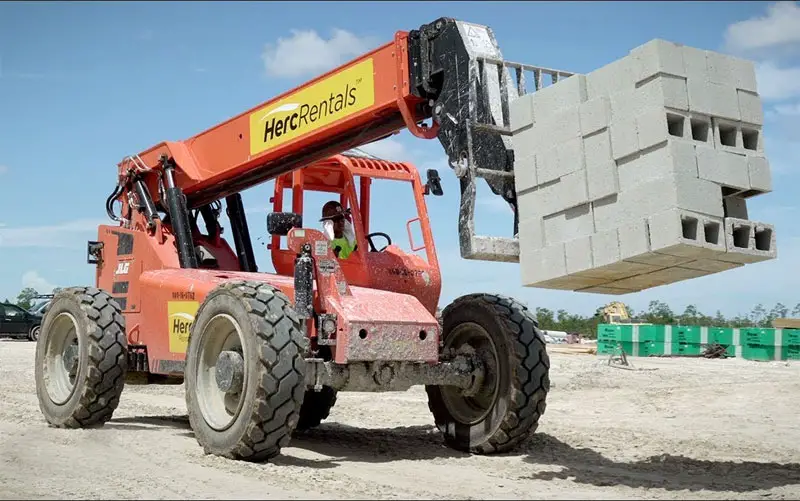
The telehandler, or telescopic forklift, is almost essential at construction sites. Its design is based off of that of a crane, with a boom and extendable arm capable of raising materials weighing as much as 5,500 pounds to a height of 19 feet, with the largest models extending as much as 55 feet.
Related: 27 Kinds of Construction Vehicles
17. Walkie Stacker
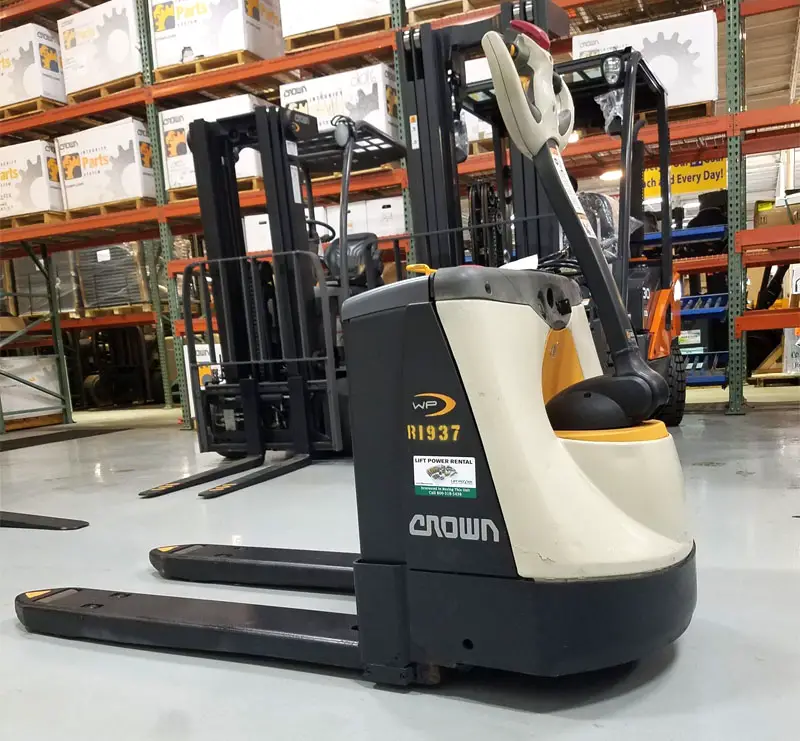
A cross between the pallet jack and warehouse forklift, walkie stackers (or powered pallet jacks) are a group of forklifts designed to carry heavy loads while the operator walks behind.
They’re capable of carrying heavier loads than a pallet jack and generally have a higher lift height. However, they’re slower than a warehouse forklift and less maneuverable.
18. Warehouse Forklift

The warehouse forklift is what you tend to think of when someone mentions forklifts, and actually includes both counterbalance and side loader types.
These have a small wheeled body with protective cage over the operator’s seat and most often are painted red or yellow.
Most warehouses employ one or more warehouse forklifts designed for a capacity of 3,000 to 12,000 pounds, with industrial warehouse forklifts having capacities as high as 25,000 pounds.
You’ll commonly see these at your local big box home improvement store whether moving stacks of lumber, bags of cement, or cases of painters’ tape.

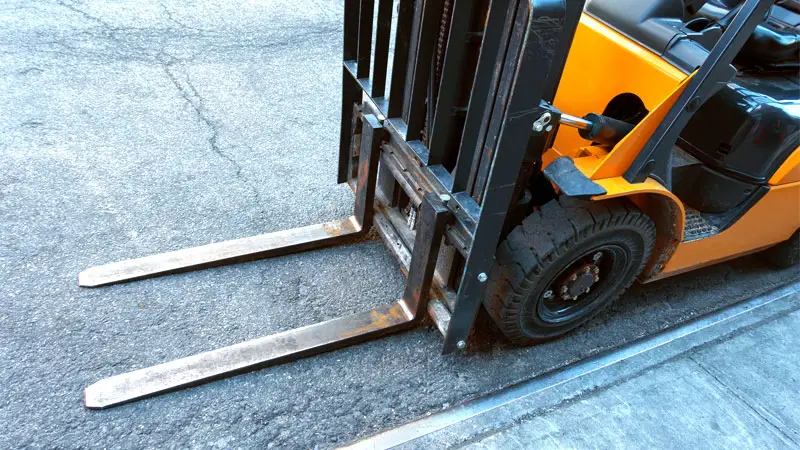
Great list post showing the different types of forklifts. If you didn’t know before what each types looks like you do now – thanks for sharing.